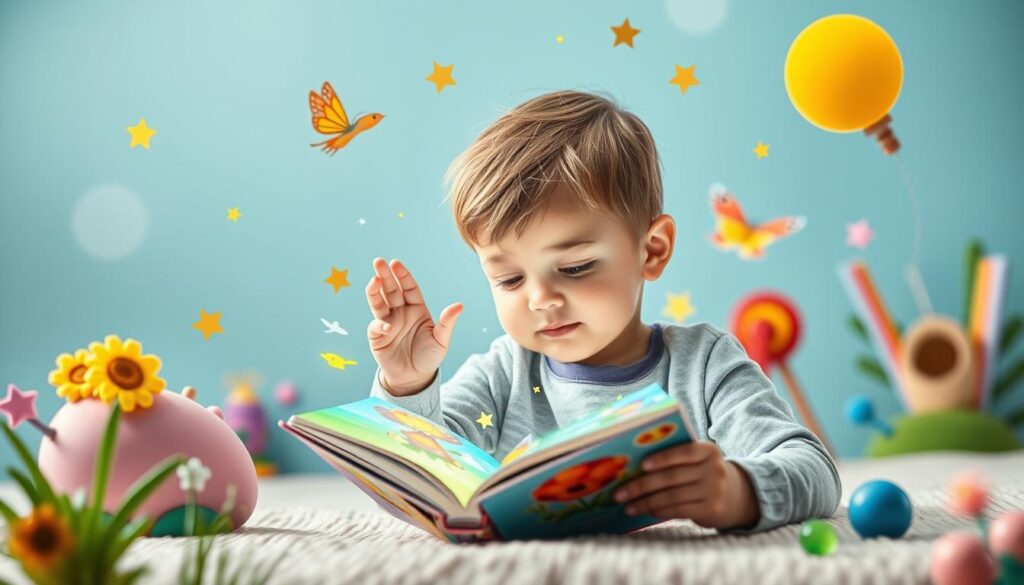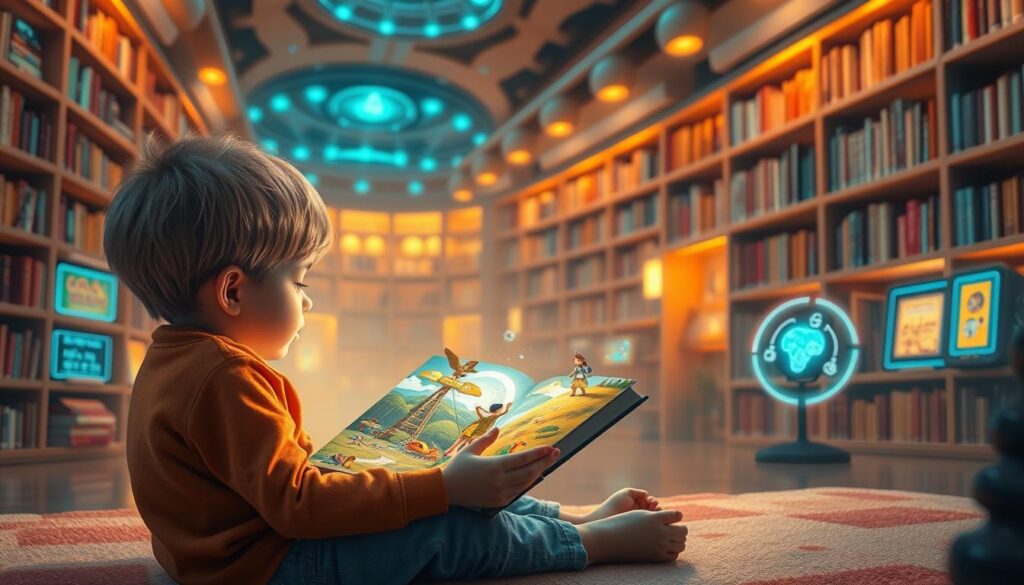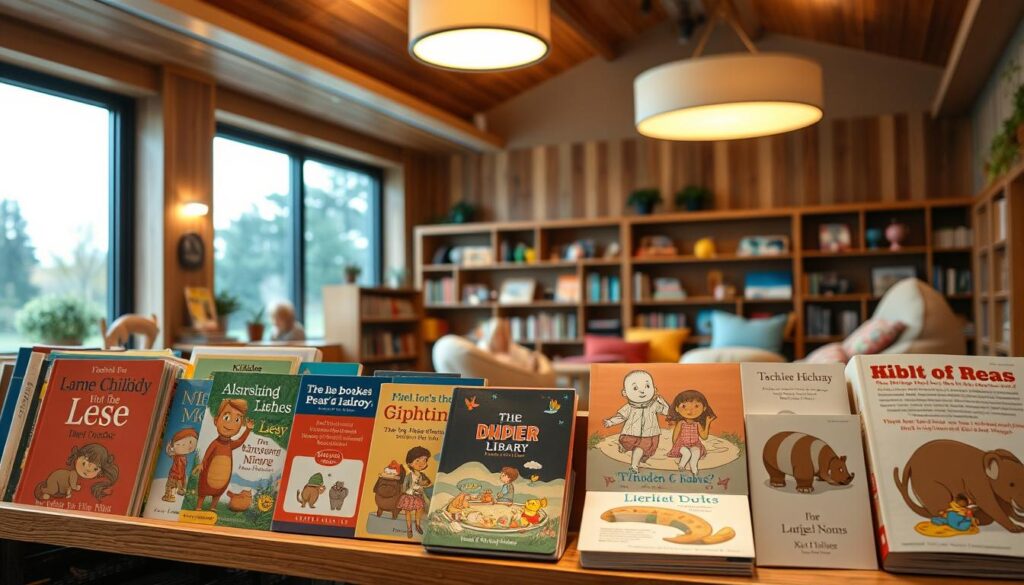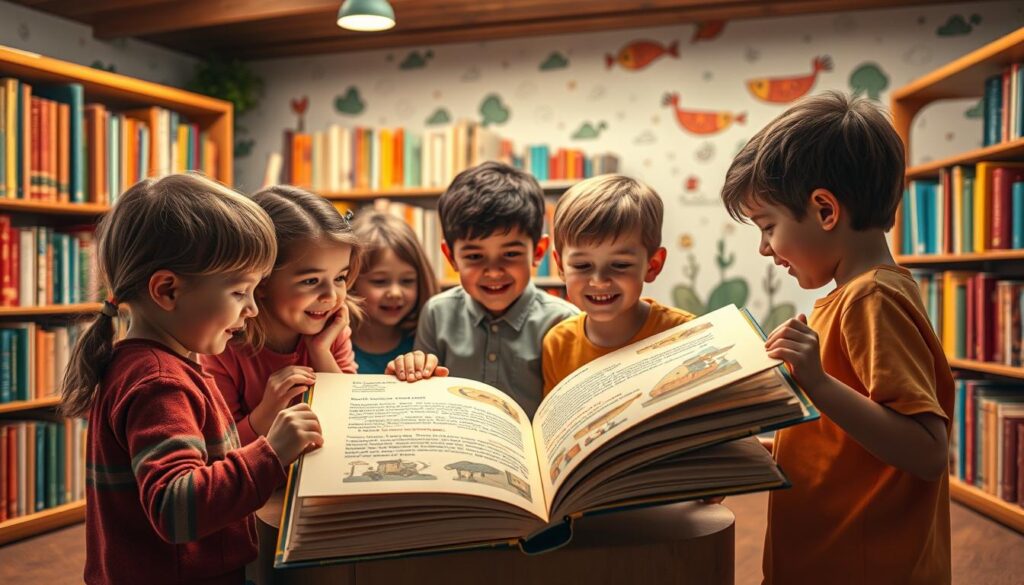Can traditional books truly prepare our children for the challenges of tomorrow? As a literature enthusiast and a believer in the power of storytelling, I’m excited to explore how the market is evolving to meet the needs of young readers.
The transformation is driven by technology and innovation, creating more immersive and educational experiences. With the global interactive children’s book market projected to reach nearly $1 billion by 2030, it’s clear that this shift is significant.
As we move forward, it’s essential to understand how these changes are shaping the way children engage with stories and the impact on their learning and development.
How Technology Is Transforming Children’s Books
As we step into the future of children’s literature, it’s clear that technology is revolutionizing the way we experience stories. The journey from traditional print books to today’s interactive digital experiences represents one of the most significant evolutions in children’s literature since the invention of the printing press.
I’ve watched as children’s books have transformed from static pages to dynamic experiences that respond to touch, voice, and movement – creating entirely new ways for children to engage with stories. This transformation is not just about replacing traditional reading; it’s about enhancing it with technology.
The Evolution from Print to Digital
The shift from print to digital has opened up new possibilities for digital books. We’re seeing a beautiful integration of technology that enhances rather than replaces traditional reading experiences. Parents are increasingly seeking out these enhanced reading experiences that combine the developmental benefits of traditional reading with the engagement of digital interaction.
Market Growth and Projections
The market data tells a compelling story – with projections showing the interactive children’s book market reaching nearly $1 billion by 2030, publishers and tech companies are investing heavily in this space. The future of making books is not just about print; it’s about creating immersive experiences that captivate young readers.
| Year | Market Size | Growth Rate |
|---|---|---|
| 2020 | $200 million | 10% |
| 2025 | $500 million | 20% |
| 2030 | $1 billion | 15% |
The evolution hasn’t been without challenges – balancing screen time concerns with the benefits of interactive reading requires thoughtful design and implementation. However, the result is a more inclusive and engaging literary experience for children, shaping the future of children’s literature.
Augmented Reality and Virtual Reality in Children’s Literature

The future of children’s literature is being shaped by innovative technologies like AR and VR. As a parent or educator, you’re likely curious about how these technologies can enhance the reading experience for children.
Bringing Stories to Life with AR
AR is transforming the way children interact with books. Imagine a child pointing a tablet at a picture book and watching as the characters come to life! With AR, static images become interactive 3D experiences that captivate young readers. For instance, researchers at Hong Kong University of Science and Technology introduced Metabook, a system that automatically generates interactive AR storybooks. This technology has the potential to revolutionize the way we consume children’s literature, making it more engaging and immersive.
Immersive Storytelling with VR
VR takes immersion to the next level by allowing children to step into their favorite stories. By exploring fictional worlds firsthand, kids can develop a deeper understanding of the narrative. According to recent developments, VR experiences can be particularly effective for educational content, enabling children to explore historical settings, scientific concepts, or geographical locations in ways that flat pages cannot match. You can learn more about the potential of interactive storytelling on Lunesia’s website.
As we’ve seen, AR and VR are not just enhancing children’s literature; they’re redefining it. By bridging imagination and reality, these technologies help children fully experience the magic of storytelling. With the accessibility of AR technology, most families can already bring these enhanced books to life using their smartphones or tablets.
AI-Powered Personalization in Future Children’s Literature Interactive Experiences
Imagine a world where children’s books adapt to their reading level, interests, and learning style – this is now possible with AI-driven personalization. The future of children’s literature is being revolutionized by AI-powered personalization, making reading more engaging and effective for young readers. AI-driven books are tailoring stories to a child’s preferences, learning style, and reading level, ensuring every reader gets a unique journey.
In November 2024, Magic Story unveiled a collection of personalized children’s books designed to make each child the hero of their own adventure. These books feature cinema-quality illustrations and customizable storylines that reflect the unique experiences and challenges of each child. You can explore more about such interactive stories on interactive stories platforms.
Adaptive Stories That Grow with the Child
AI is revolutionizing children’s literature by creating truly personalized reading experiences that adapt to each child’s unique needs, interests, and developmental stage. For instance, adaptive story systems adjust vocabulary, complexity, and themes as a child’s reading skills and comprehension develop over time. This means a book can seamlessly incorporate a child’s current interests, such as dinosaurs, into the narrative.
| Features | Benefits |
|---|---|
| Adaptive Vocabulary | Adjusts to child’s reading level |
| Customizable Storylines | Reflects child’s experiences and challenges |
| Dynamic Themes | Supports emotional and cognitive development |
Voice-Activated and AI-Narrated Books
Voice-activated books are creating new ways for children to interact with stories, allowing them to ask questions, request definitions, or influence the narrative through verbal commands. AI-narrated books with synchronized highlighting help build the connection between spoken and written words, supporting literacy development. The Sound AiSleep technology, for example, creates personalized audiobooks narrated in a parent’s voice, fostering a comforting and familiar auditory environment.

Multisensory and Gamified Reading Experiences
Multisensory and gamified reading experiences are revolutionizing the way children interact with stories. By incorporating touch, sound, and motion, these interactive books create a richer reading experience that engages young readers on multiple levels.
Touch, Sound, and Motion Integration
Interactive children’s books now integrate various elements like textured pages, embedded sounds, and motion-responsive content. This multisensory approach activates multiple learning pathways, making reading more engaging and fun for kids.
- Tactile elements engage kinesthetic learners.
- Sound integration enhances comprehension and emotional connection.
- Motion-sensitive books transform reading into an active experience.
Educational Gamification Elements
Gamification elements like quizzes, challenges, and rewards make learning more enjoyable. By incorporating educational games into storytelling, these interactive children’s books reinforce literacy, math, and problem-solving skills in young readers.
Accessibility and Inclusivity in Modern Children’s Books
In the realm of children’s literature, a quiet revolution is underway, centered on making books more accessible and inclusive. I believe this shift is crucial as it ensures that every child, regardless of their background or abilities, can enjoy a rich reading experience. Modern children’s books are breaking down barriers that have historically limited access to literature for many children around the world.

Multilingual and Culturally Diverse Content
The interactive children book market is expanding its reach by offering multilingual options and culturally diverse content. This not only supports language preservation for minority languages but also aids in second language acquisition. For instance, digital platforms now allow children to switch between languages, making reading more accessible and enjoyable.
| Feature | Benefit | Impact |
|---|---|---|
| Multilingual Options | Supports language preservation and second language acquisition | Increases accessibility for diverse young readers |
| Culturally Diverse Content | Authentically represents children from all backgrounds | Helps develop positive self-identity and empathy |
Eco-Friendly and Sustainable Publishing Practices
The publishing industry is embracing sustainability in meaningful ways, from digital formats that eliminate paper use to eco-friendly materials like recycled paper and vegetable-based inks for physical books. As a result, the environmental impact of children’s books is being significantly reduced. Interactive elements are also being designed with sustainability in mind, moving away from disposable batteries toward rechargeable systems.
Conclusion: The Bright Future of Children’s Storytelling
I’m excited about the future of children’s literature, where technology and traditional storytelling blend to create something new and exciting. The interactive children’s book market is evolving, offering richer and more engaging reading experiences for young audiences. With innovation driving this change, books are becoming more immersive, educational, and accessible.
As these trends continue, young readers will have endless opportunities to explore, learn, and engage with stories in new ways. The market trends show that interactive storytelling is here to stay, representing a fundamental evolution in how children experience literature.
FAQ
What is augmented reality in children’s books?
Augmented reality (AR) in children’s books is a technology that overlays digital information and images onto the physical world, making stories more engaging and immersive. For instance, a picture book with AR capabilities can come to life when viewed through a smartphone or tablet, offering a unique reading experience.
How does AI personalization work in digital books?
AI-powered personalization in digital books involves using algorithms to adjust the story’s pace, difficulty, and content based on a child’s reading habits, preferences, and learning style. This creates a tailored reading experience that can help keep young readers engaged and motivated.
Are digital books with AR and VR features expensive?
The cost of digital books with AR and VR features can vary. While some may be more expensive than traditional e-books, many publishers are working to make these technologies more accessible and affordable. You can find a range of options, from free apps with AR capabilities to premium VR experiences.
Can I use digital books with my child if they are not tech-savvy?
Absolutely! Many digital books are designed with young readers and their parents in mind. They often feature intuitive interfaces and simple navigation, making it easy for kids to use them independently or with minimal supervision.
How do gamified reading experiences benefit my child?
Gamified reading experiences can make reading more enjoyable and engaging for kids. By incorporating elements like rewards, challenges, and achievements, these experiences can motivate children to read more and develop a love for reading that can last a lifetime.
Are there eco-friendly options available for digital children’s books?
Yes, many publishers are now adopting eco-friendly and sustainable practices when producing digital children’s books. This includes using digital platforms that reduce the need for physical materials, as well as creating content that promotes environmental awareness and sustainability.
Can I access digital books on my existing devices?
In most cases, yes! Many digital books are designed to be compatible with a range of devices, including smartphones, tablets, and e-readers. Be sure to check the system requirements for the specific book or platform you’re interested in to ensure compatibility.




